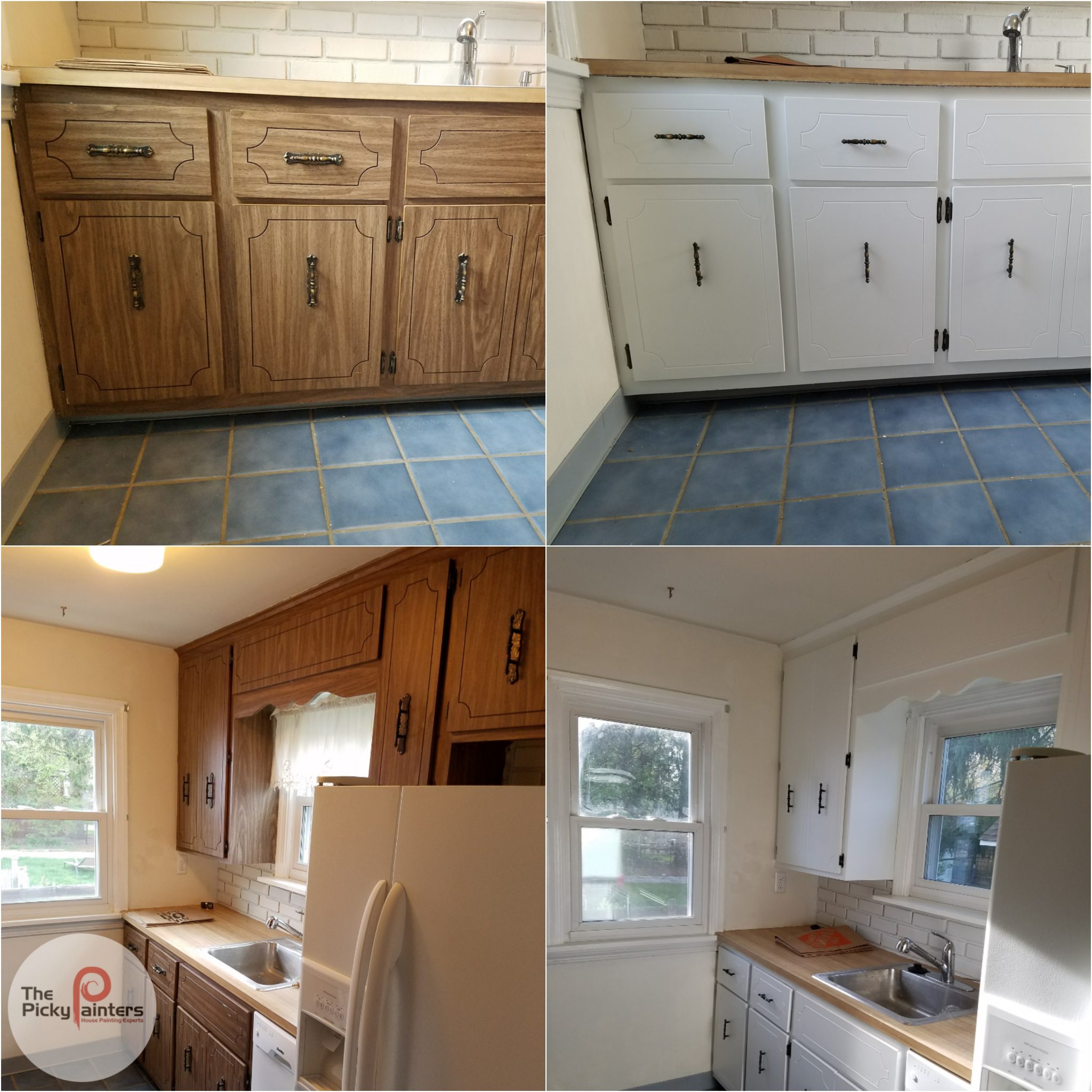Addressing Common Challenges

Painting kitchen cabinets in place presents unique challenges. Success hinges on meticulous preparation and careful execution. Overcoming common pitfalls ensures a professional-looking finish that stands the test of time.
Drips and Uneven Coverage
Drips and uneven paint application are frequent problems. Thick paint application, improper brushing techniques, and insufficient drying time between coats all contribute. Preventative measures include using a high-quality paint formulated for cabinets, thinning the paint slightly according to manufacturer instructions for better flow and leveling, and employing a slow, even application technique with minimal pressure. Applying thin, even coats allows each layer to dry completely before the next, reducing the risk of drips and ensuring even coverage. For drips, immediate attention is key. Use a damp cloth to gently wipe away excess paint before it dries.
Paint Adhesion Issues, Can i paint kitchen cabinets without removing them
Poor paint adhesion can lead to peeling and chipping. This is often due to inadequate surface preparation. Grease, dirt, and old finishes must be completely removed before painting. A thorough cleaning with a degreaser, followed by sanding to create a slightly rough surface for better adhesion, is crucial. Using a primer specifically designed for cabinets further enhances adhesion, especially on glossy surfaces. Choosing a paint type appropriate for the existing surface is also essential; oil-based paints adhere better to glossy surfaces than water-based paints, while the opposite is true for matte surfaces.
Ventilation and Safety Precautions
Proper ventilation is essential when working with paint, as many contain volatile organic compounds (VOCs) that can be harmful if inhaled. Always work in a well-ventilated area, ideally outdoors or with windows and doors open. Use a respirator or dust mask to prevent inhalation of paint fumes and dust particles generated during sanding. Safety glasses protect your eyes from paint splatters and dust. Gloves prevent skin irritation from paint and solvents. Keep paint and solvents out of reach of children and pets. Always refer to the manufacturer’s safety data sheet (SDS) for specific safety precautions related to the products used.
- Wear safety glasses.
- Wear a respirator or dust mask.
- Wear gloves.
- Work in a well-ventilated area.
- Keep paint and solvents out of reach of children and pets.
Paint Application Methods
Different methods offer varying advantages and disadvantages.
| Method | Advantages | Disadvantages |
|---|---|---|
| Brush | Precise control, ideal for detailed work and corners | Labor-intensive, can leave brushstrokes if not applied carefully |
| Roller | Faster coverage than brushing, relatively smooth finish | Less precise control, may leave roller marks, unsuitable for detailed areas |
| Sprayer | Fastest application, very smooth finish | Requires more setup and cleanup, potential for overspray and uneven coverage if not used properly, may require specialized equipment |
Alternative Approaches and Considerations: Can I Paint Kitchen Cabinets Without Removing Them
Painting kitchen cabinets in place offers significant advantages, but achieving a professional finish requires careful planning and execution. This section explores techniques to maximize your results and Artikels a simple project plan to guide you.
Tips for a Professional Finish
Several key strategies contribute to a high-quality paint job on your kitchen cabinets without the hassle of removal. Proper preparation is paramount; thorough cleaning, sanding, and priming are essential for adhesion and a smooth, even finish. Using high-quality paint specifically designed for cabinets, applied in thin, even coats, also makes a significant difference. Consider using a paint sprayer for a flawless finish, especially on larger cabinet surfaces, though meticulous brushing can also yield excellent results. Remember, patience is key; allow sufficient drying time between coats to prevent issues like drips or runs. Finally, masking tape is your friend – use it strategically to protect surrounding areas and create clean lines. For example, using painter’s tape to precisely mask cabinet edges before painting will prevent messy overlaps.
Project Plan: Painting Kitchen Cabinets in Place
This plan provides a realistic timeframe and material list for a standard-sized kitchen. Adjust quantities based on your specific needs. Remember that unexpected delays can occur, so adding a buffer day is always a good idea.
| Item | Quantity | Estimated Time |
|---|---|---|
| Cabinet Cleaning Solution (Degreaser) | 1 bottle | 1 hour |
| Sandpaper (various grits) | Assortment | 2-3 hours |
| Primer | 1-2 quarts | 3-4 hours (including drying time) |
| Cabinet Paint (2 coats minimum) | 2-3 quarts | 6-8 hours (including drying time) |
| Painter’s Tape | Multiple rolls | 1-2 hours |
| Paintbrushes/Roller/Sprayer | As needed | Variable |
| Drop cloths/Plastic sheeting | Sufficient coverage | 1 hour |
| Cleaning supplies | As needed | 1 hour |
| Total Estimated Time | 16-24 hours (spread over several days) |
Creative Techniques and Decorative Finishes
Beyond a simple solid color, you can explore various finishes to enhance your kitchen’s aesthetic appeal. A distressed look, achieved by carefully sanding back the paint in certain areas after it dries, can add character and charm. Alternatively, a glaze can be applied over a base coat to create depth and subtle highlights. Consider a two-toned approach, painting the cabinet doors one color and the frames another, for a contemporary twist. For a more dramatic effect, try a metallic finish like copper or brushed nickel, especially effective on cabinet hardware or accent pieces. For instance, painting the island cabinets a contrasting color while keeping the perimeter cabinets a neutral tone can create a visually striking focal point.
